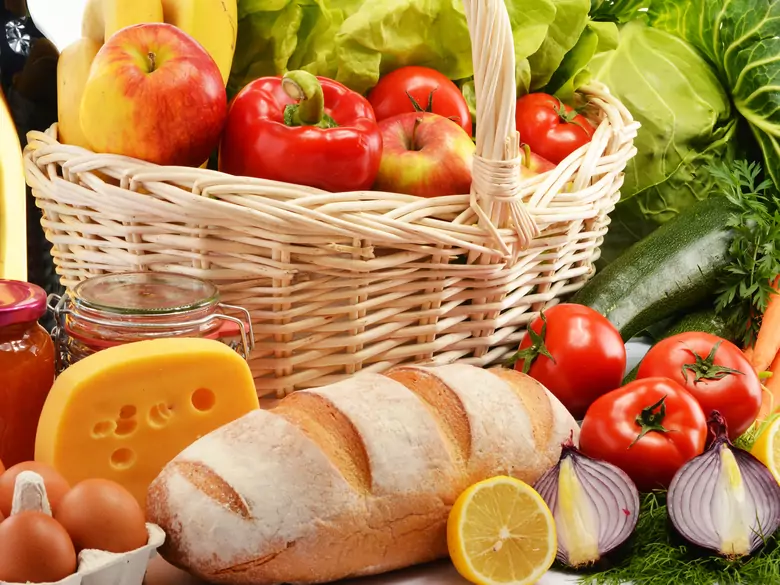The foods most likely to cause a severe generalised allergic reaction - anaphylaxis - in allergic individuals are primarily cow's milk, egg white, peanuts and sometimes shellfish and sea fish. However, these are not all foods that are potentially dangerous for allergy sufferers.
The incidence of allergy to a given product is determined by the age of the allergic individuals and the frequency of daily consumption of the product in a given geographical region. In Poland, in young children sensitisation to food allergens in the form of mild skin symptoms up to and including anaphylactic shock is most commonly triggered by milk protein (the peak of symptoms occurs mainly in infancy and up to the age of 3 years), egg white (symptoms affect children aged 1-6 years in particular) and peanuts, whose importance in Europe, as an ingredient used in food and products, has recently been increasing rapidly. At the same time, there has been a reduction in the age limit from which allergy-specific symptoms appear.
These three sources of food allergens have a wide range. Allergy to them is a universal problem, both in Europe and worldwide. Some products, on the other hand, whose consumption varies geographically, are mainly of regional importance. For example, in Scandinavian countries sensitisation to marine fish meat is a greater problem than in Poland, and in Mediterranean countries sensitisation to shellfish. Potentially, anaphylaxis can be triggered by any food. The following list of the 14 most common foods (presented in alphabetical order) with high allergenic potential will help you identify them. This knowledge could save your life or that of someone close to you.
Sulphur dioxide (sulphites, E 220-E 227)
Extremely rare cause of a generalised allergic reaction. It is added to foods as a preservative to protect against moisture and mould, e.g. dried and candied fruit. It is also present in meat products and carbonated drinks, as well as in wine and beer. Vegetables and fruit are also preserved with sulphur dioxide so that they do not oxidise (darken). The symptoms of a generalised allergic reaction usually take the form of bronchospasm or anaphylactic shock.
Eggs
Allergy to eggs, and in particular to egg white, is most common in young children. The less thermally processed the egg white, the greater its allergenic potential. Thus, the lowest risk of a reaction in an allergic person is after the consumption of egg white in baked form (e.g. sponge cake), slightly higher after the consumption of hard-cooked egg white, followed by soft-cooked or scrambled egg white, and highest after the consumption of raw egg white e.g. in the form of mayonnaise, tiramisu or as an additive to tartare bacon. Allergic symptoms can be violent up to anaphylactic shock.
Lupin
A legume, relatively recently discovered as a product with high allergenic potential. Lupin allergens, are very similar to those found in peanuts. In some people, sensitisation to lupin in skin tests may be due precisely to a cross-allergy to peanuts. Since 1990, lupin has been added to various flours, used as a substitute for soya in vegetarian products or as an ingredient in some energy bars for athletes. It is extremely rare, but can cause allergic reactions mainly with respiratory symptoms.
Molluscs
Mussels, squid, snails, oysters, octopus and whelks are among the products with high allergenic potential. Molluscs, in addition to a separate dish, are also found in fish dishes, surimi sticks and as an ingredient in oyster sauce. In Poland, consumption of this group of products is relatively rare. In sensitised individuals, consumption of even a minimal amount can trigger a violent, potentially life-threatening allergic reaction.
Milk
Allergy to milk proteins is by far the most common food allergy in Poland and mainly affects children in their first period of life. The majority of allergic children acquire tolerance by the age of 3 years, although due to the use of restrictive elimination diets in these children, there is a tendency for tolerance to be acquired later, at preschool and even early school age. Due to the cross-reactivity between milk species of other ungulates, in people allergic to milk allergens, their consumption is not recommended. In addition to milk in its pure form, allergens are found in the form of processed foods such as ice cream, biscuits and sweets. Milk additives can also be found in mayonnaise, salad dressings, instant porridge, potato purée, margarine, pancakes, dumplings, powdered soups, jarred and tinned food, ready-made fish dishes and bread (whey has a minimal allergenic effect). Milk is also added to cold meats and pâtés. It is found in breaded foods, sports nutrition products and some medicines. In the youngest children who are allergic to milk allergens, its ingestion can cause violent symptoms of a generalised allergic reaction to full-blown anaphylactic shock.

photo: panthermedia
Mustard
Whatever its form - liquid, powdered, or in grain form - the main allergenic ingredient contained in mustard is mustard. It can also be present as a bread additive, in curry dishes, marinades, meat products, salad dressings, soups and powdered sauces. Mustard is a rare cause of anaphylaxis.









